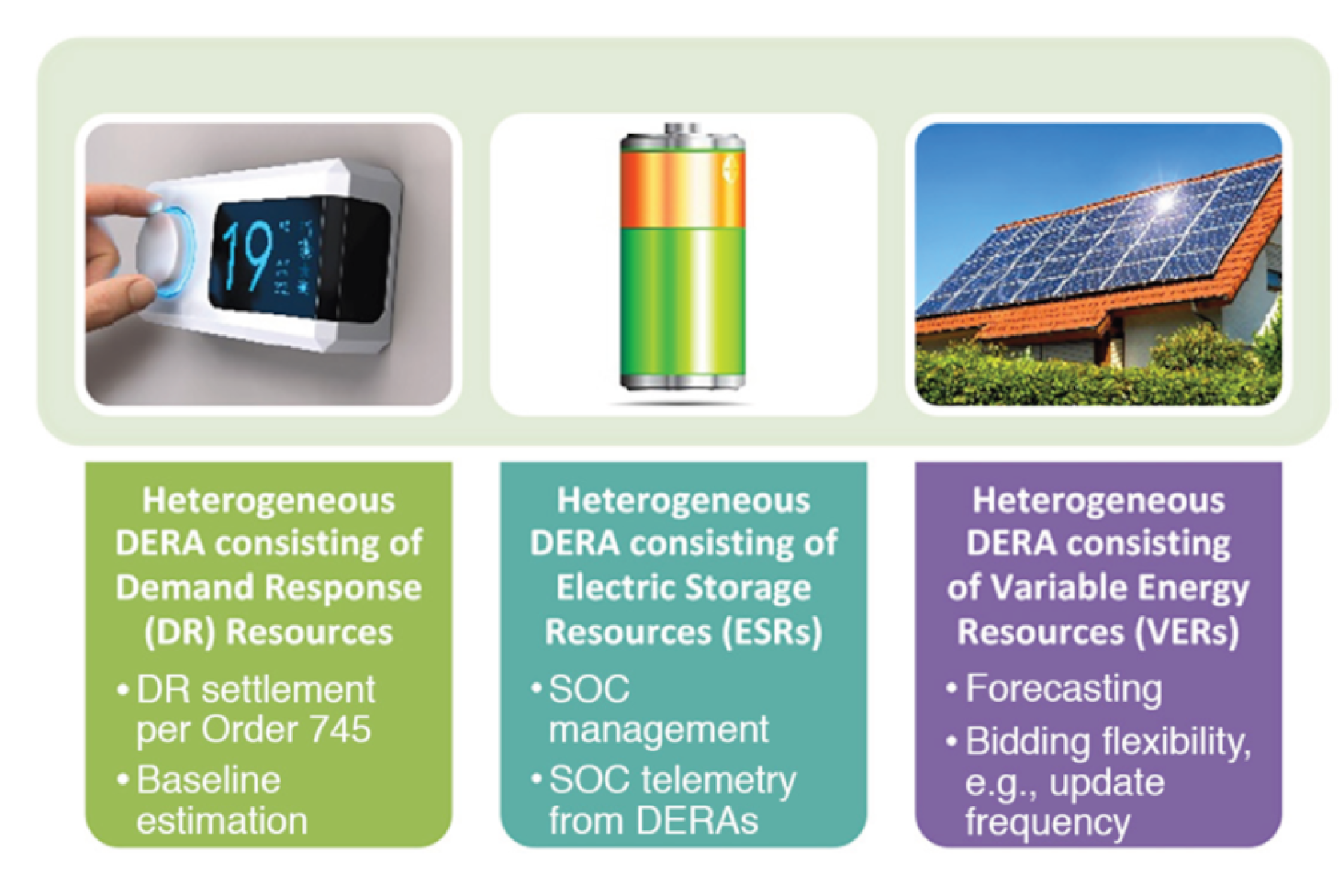The primary objective of the workstream was to support FERC jurisdictional ISO/RTOs and other stakeholders as they change wholesale electricity market design, operations, and market clearing software to comply with the order. It covered topics related to wholesale market design and operation from the ISO/RTO perspective, including DER aggregation participation models, market rules for different services, and geographically broad aggregations.
As part of this workstream, first the proposed rules under Order 2222 were summarized, along with commentary from different stakeholders and clarifications from the FERC, to appreciate the rationale and development of various aspects of the Order. Moreover, the current state-of-the-art for market design, operational practices and resource technologies was reviewed in the context of DER aggregation participation in wholesale markets. However, most importantly, the workstream highlighted the challenges and potential solutions for two key aspects of wholesale DER aggregation market participation, i.e., the participation model design and feasibility of geographically broad aggregations.
The participation model design considerations encompassed heterogeneous DER aggregations that comprise of different types of DER technologies including demand response, electric storage, and variable energy resources. Different areas for revising the market operational and planning practices were identified to better incorporate bidding, dispatch, and commitment parameters of DER aggregations. Furthermore, various design requirements of the Order, such as the size of participating DER and DERA, were reviewed along with the current changes under consideration by different ISO/RTOs.



Market Participation Model Design Considerations: Different types of heterogeneous DERAs face distinctive challenges and offer unique opportunities.
The feasibility assessment of geographically broad DER aggregations spanning multiple transmission nodes helped identify the benefits, such as increased resource participation and improved market performance, as well as the potential impacts on system reliability, dispatch, pricing, and settlement of resources. In addition, the proposals on DER aggregation locational requirements from different ISOs/RTOs were reviewed, and corresponding market and operational implications were presented.
Multi-Node Aggregation
Multi-Node Aggregation
Locational Requirements


Main Benefit
-
Greater market participation
-
Lower chance of underperformance
-
Improved services by the DERA
-
Better visibility and control to manage transmission congestion
-
Reduced telemetry costs
-
Minimize changes to the market engine
Challenges
-
Managing transmission constraints/reliability impact
-
Pricing issues
-
Distribution factor update issues
-
Potentially lower market participation
-
Computational challenges
Relation to DERA Size
-
Can impose maximum size limitations to mitigate the impact of DERA on constraints
-
No participation concerns because of small (100 kW) minimum size requirement
Pricing
-
Paid at weighted average LMPs
-
Paid at nodal price (LMP)
ISOs and Local Requirements
CAISO
Multiple Transmission Pricing Nodes
- DERs to aggregate within a single sub-LAP (subset of pricing nodes with minimal price differentiation)
- Same rule applies to DR
- 23 sub-LAPs compared with over 12,000 pricing nodes
- Maximum DERA size limitation of 20 MW for DERAs across multiple transmission pricing nodes
ISO-NE
Multiple Transmission Nodes/Single Pricing Node
- All constituent DERs must be within a DRR Aggregation Zone (a subset of transmission nodes with minimal transmission constraints within the area)
- Intersection of a DRR Aggregation Zone and a Metering Domain for other participation models
- 20 DRR Aggregation Zones compared with over 1,000 pricing nodes
- Maximum size of 5 MW for aggregated DERs located at a single transmission node which is part of a DERA
NYISO, MISO, PJM, SPP
Single Transmission Pricing Node
Key Takeaways
- Granular participation models that include greater use of resource operational characteristics to determine the optimal scheduling of the resource provide both reliability and economic efficiency benefits. However, they are expensive to develop, and may be perceived to give less control to a resource offer strategy.
- Different RTO/ISOs have their own unique stances on geographically broad aggregations, with some preferring single node-aggregations while other recommending multi-node aggregations based on the perceived benefits or challenges of the respective options. These preferences may also vary depending on the type of wholesale market service provided.
- ISO/RTOs will need to work with their stakeholders to determine the best paths forward as changes to resource market participation eligibility are in effect.